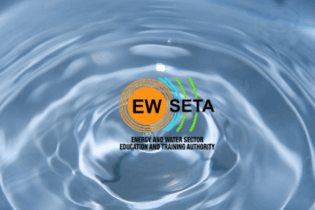WATER TREATMENT
Water scarcity (hydric stress) is an imminent global challenge. The demand for desalination technologies is increasing steadily. It is estimated that half of all installed desalination capacity worldwide is treated by reverse osmosis. The waste brine streams from the application of membrane technologies are classified as industrial wastewater. A critical issue is how to deal effectively with the brine streams resulting from the use of reverse osmosis as the current methods are environmentally unacceptable. Revolutionary chemical-free toxic water treatment system The hazardous streams as a result of reverse osmosis are environmental threats in the making as they are predominantly being fed into evaporation ponds. The current treatment processes are energy intensive and extremely costly to operate. Simply dumping or hiding theses brine streams is no solution. In a world first, a cost-effective, comprehensive solution for treating toxic wastewater, regardless of its chemical composition, was launched at the Tshwane University for Technology’s (TUT) Soshanguve Campus in November 2011. The HybridICE Freeze Crystallisation Technology is a sustainable and cost effective method for treating hazardous brine streams resulting from the application of reverse osmosis. With the HybridICE technology, the cost of treatment can be reduced by up to ten-fold of the cost of any other treatment method currently available. This chemical-free water treatment technology developed by Frederick Simon Oosthuizen is the only known comprehensive solution for treating complex waste waters regardless of their chemical composition, which may include harmful endocrine disruptors. “In developing the HybridICE, we have successfully pioneered a unique method to freeze out clean ice crystals. In return, the manipulation of the ice crystal enables us to recover pure water as a usable product from any toxic brine stream,” says Oosthuizen, who developed the technology in collaboration with Prof Jannie Maree, chairperson of the Rand Water Chair of Water Utilisation at TUT.The secret’s in the freeze
The development of this technology started in Germany in 2007 and is said to revolutionise the water treatment industry through the method of using refrigeration energy to freeze out the water in a solution with dissolved chemicals. In this way, the waste heat from the refrigeration process is used to recover the contaminants as solids. HybridICE is the first operational freeze crystallisation plant ever realised in which the water is completely separated from the toxic waste as solid ice. The first objective for the development team was to deal with polluted and toxic brine streams, mainly produced by membrane technologies, typically from reverse osmosis and other industrial wastewaters, through freeze desalination. This technology enabled them to create water of the purest quality, equivalent to glacier water quality. But according to Oosthuizen, treating water is not an art; dealing with the pollution created as a result of water treatment is the real engineering challenge. This has not yet been achieved.
Background
Oosthuizen met with Prof Maree towards the end of 2008. “His activities and engagement with the project contributed positively towards the building of the first commercialised 25m³/day HybridICE Freeze Crystallisation plant, which was installed at TUT’s Soshanguve Campus,” Oosthuizen continues. According to the developer, experts around the world have been working tirelessly for more than half a century to understand and realise such a technology, but without success. “Until very recently, this method was not even regarded as viable,” Oosthuizen adds.
According Oosthuizen, the commercial applications of the HybridICE is unlimited and will create thousands of job opportunities in South Africa. “I am committed to making this an all-South African project in order to benefit as many people as possible in our communities. In 2012, we will start to build a novel water-treatment technology system for desalination and the treatment of acid mine drainage. We aim to treat any industrial wastewater at a cost of less than R7 per m³,” Oosthuizen says. “We will then apply our already developed technology to deal with the brine stream that is produced, making this a truly comprehensive method for treating toxic waters.” Interestingly, the team has already achieved treatment cost of merely R15 per m³ for industrial wastewater and brine stream treatment, which is a factor 10 cheaper than any other known method. TUT’s role
“Water scarcity is an imminent global challenge and TUT certainly has the expertise to play a vital role in developing more cost-effective, sustainable technical solutions to solve this problem in South Africa,” said Dr Prins Nevhutalu, DVC of Research and Innovation. He says that TUT is one of the pioneers in water treatment in the country, with a Water Care course that was introduced as far back as 1996, and the university is proud of its strengths and expertise in water technology. “Apart from the development of brine treatment through the HybridICE technology, TUT has also been involved in developing other innovative solutions and patents for water treatment. The limestone neutralisation of free acid, a CSIR patent, has already been fully implemented, while a TUT patent for the removal of iron (II) with limestone is expected to reduce alkali cost in Gauteng from R94 to R49 million per year,” Dr Nevhutalu adds. Prof Pieter Marais, Dean of the Faculty of Science, said this project represents the pinnacle of what a university of technology should do. “We must find effective, sustainable solutions to real-world problems. With the steadily increasing demand for desalination technologies it is estimated that half of all installed desalination capacity world-wide is treated by reverse osmosis. The waste brine streams from the application of membrane technologies are classified as industrial wastewater. A critical issue is how to deal effectively with the brine streams resulting from the use of reverse osmosis, as the current methods are environmentally unacceptable. These hazardous streams are environmental threats in the making, as they are predominantly being fed into evaporation ponds. The current treatment processes are energy-intensive and extremely costly to operate. Simply dumping or hiding the brine streams is no solution.”







